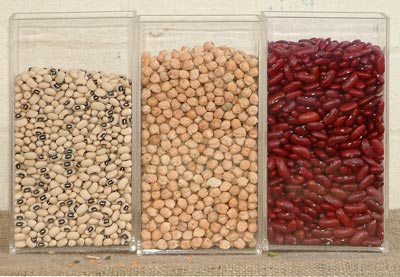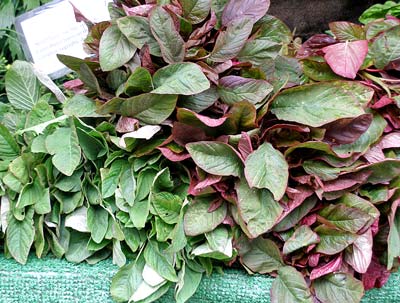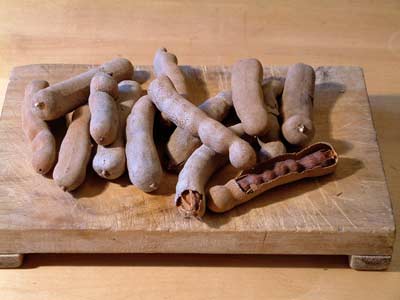
Chickpeas (US: garbanzo beans), Bengal gram, channa. Darker and smaller than the chickpeas generally available in the West.
Chirongi nuts. They are similar to pine nuts and are small, rounded nuts resembling Egyptian lentils. They are used in India to garnish halvas, cakes and creams and in puddings and pillaos.

Indian spinach. This is most likely to be Basella alba, a tropical climbing plant that can grow as high as 2 meters (6 ft), the leaves being harvested as the plant grows and cooked in the same way as spinach or stewed in oil with spices. It is a type of amaranth, which includes many varieties of a sweetish green leafy vegetable known by many different names, including callalloo, elephant’s ear, African/Ceylon/ Chinese/Indian spinach, Surinam amaranth, etc.

Tamarind. A sour-sweet fruit, sometimes known as the Indian date, used as a souring agent. It comes in long, dry brown pods which look almost like dried broad bean pods. Inside is a long, segmented fruit, like a long brown caterpillar. Each segment contains a hard, shiny black seed. As the pods dry the fruit becomes sweeter. A visitor from Mauritius suggested shaking the tamarind and, if you could hear that the fruit had detached and was rattling a little inside the pod, you would find that the fruit was sweet. All you need to do is to remove the pod and then chew the fruit, discarding the seeds. It is also available mashed and formed into a pulpy block or as a juice. In this form it is used like lemon juice.
Sapodilla. A fruit which can be round or oval. Its thin skin is slightly rough and the flesh is dull, beige to terra cotta in colour and slightly granular with flat black seeds. Peel the skin away to reveal the apricot-coloured, honey-flavoured flesh. If it is eaten slightly under-ripe it may leave a residue of gum in the mouth. This can be dispelled by eating something fatty or wiping the lips with butter. One variety provides the gum for chewing gum.

Tamarind. A sour-sweet fruit, sometimes known as the Indian date, used as a souring agent. It comes in long, dry brown pods which look almost like dried broad bean pods. Inside is a long, segmented fruit, like a long brown caterpillar. Each segment contains a hard, shiny black seed. As the pods dry the fruit becomes sweeter. A visitor from Mauritius suggested shaking the tamarind and, if you could hear that the fruit had detached and was rattling a little inside the pod, you would find that the fruit was sweet. All you need to do is to remove the pod and then chew the fruit, discarding the seeds. It is also available mashed and formed into a pulpy block or as a juice. In this form it is used like lemon juice.